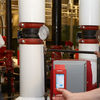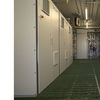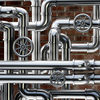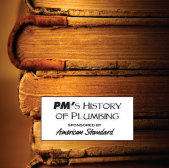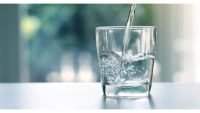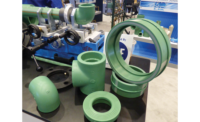As we begin the challenge of a new year, many of last year’s issues continue to follow us. So I thought that I would introduce the industry to a new showerhead being offered by Safe Shower. I first became aware of this product on Sept. 7, 2023, through Linkedin. It was during an exchange with Lidor Zabari, CEO and inventor, discussing an article that I had written about Legionella at points of usage. The article discussed the concept of automatic drainage of the showerhead, shower hose and the shower arm riser from the shower valve body.
First, let me say that no material or product is appropriate for all applications. There are pros and cons to every material or product and as such it is the design professional’s responsibility to use sound engineering judgment. The design professional must select the materials or products based on their application and the needs of the project and client, which best fit the protection of the public health, safety and welfare. There is no one fix for all, only the selection that serves the need and is determined to be the best fit for the application.
Now back to the discussions that Mr. Zabari and I had regarding the article and his firm’s product offering. The article discussed the need to eliminate or at least minimize any standing water within the shower riser, shower arm, shower hose and showerhead. It discussed a design that Kohler and I had worked on, using conventional materials to automatically drain the water for this area after the shower valve is closed. Chicago Faucet currently has an offering of a shower valve that accomplishes this intent. However, as Mr. Zabari pointed out, water droplets still remain. And it is those water droplets that have the potential to permit the growth of biofilm that can contain pathogens such as Legionella. As I have previously stated, there is no perfect material or product. As we continued to discuss the potential for pathogenic growth, Mr. Zabari introduced me to his products. Some are currently available while others are under development.
FIGURE 1

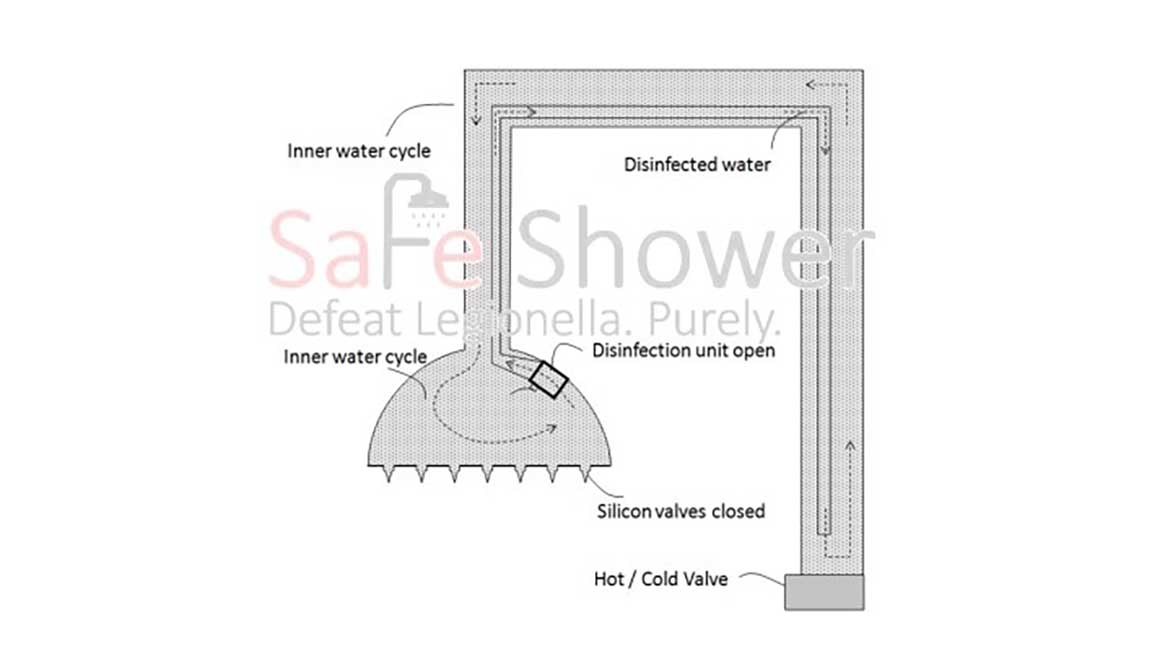
Figure 1: Design concept.
The idea is to minimize the potential for the development of a biofilm along with minimizing or eliminating the potential for pathogenic growth. As Mr. Zabari pointed out, water droplets or moisture remain in the path from the shower fitting body to the atmosphere. So how can one provide another means of minimizing the risk of pathogenic growth? Safe Shower proposes to circulate a disinfectant, such as chlorine or UV water within the contained water between the shower fitting and the discharge point of the showerhead as shown in Figure 1. However, the head itself, as shown in Figure 2, only places disinfectant in the area of the showerhead and relies on the disinfectant to migrate through the water via capillary forces.
FIGURE 2

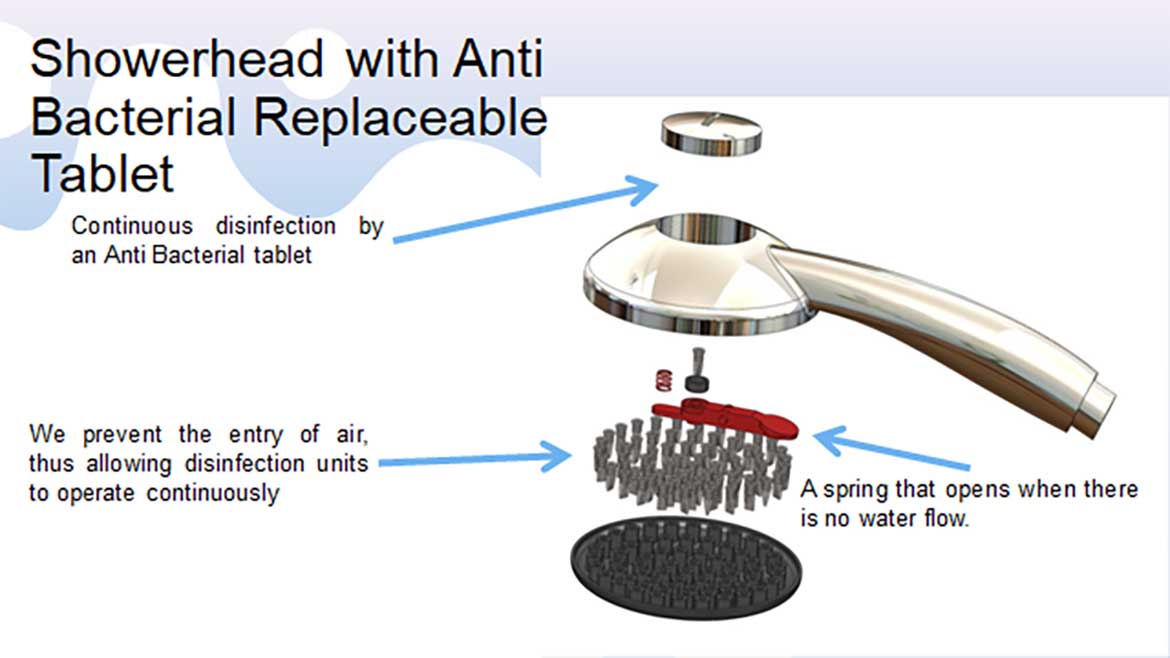
Figure 2: Showerhead with disinfectant tablet.
While I view this as a step in a positive direction, it is not the final solution, but an initial step in the development of a product. As is noted in Figure 2, the showerhead utilizes a unique polymer valve to prevent air from entering the space between the shower fitting and the atmosphere at the showerhead. It also incorporates a spring-loaded device that opens once water flow has ended. This prevents disinfectant from entering the flowing water stream during active showering. Once this spring-loaded device opens, a path is created for the disinfectant to circulate via diffusion in the standing water space between the shower fitting and showerhead. The diffusion process allows the disinfectant to migrate in all directions, similar to placing a teaspoon of salt in a large bucket of water. The salt will spread evenly over time throughout the volume of water to obtain equilibrium.
Another option is the UVC LED disinfectant approach. The device incorporates a tiny turbine within the flow stream to generate electricity that powers the unit along with battery storage. Based on Mr. Zabari’s calculations of the energy required to disinfect a liter of water (the amount assumed to be contained within the riser, shower arm, shower hose and showerhead), the water circulation will last for a few seconds and then stop for 18-hours. A 10-minute shower can store sufficient energy to disinfect half a liter for about 2 weeks, depending on battery size and a spin of the turbine for a few seconds every day is sufficient to keep the system operating. Additionally, this model (under development) will incorporate a tiny pump to induce disinfectant movement throughout the trapped water via an internal tube that will swirl the water.
It is Mr. Zabari’s thought that the disinfectant-based unit would be most applicable to the health care market. While still underdevelopment, UCV LED solution would be more appropriate anywhere including private homes.
The self-sealing showerhead with disinfectant, as shown in Figure 2 and the YouTube link, has a United States patent, number US 11,045,829 B2, issued on June 29, 2021. In my opinion, this is another tool in our toolbox to consider in the ongoing efforts to reduce and minimize the continuing health risks present in plumbing systems for pathogens, such as Legionella. While, it may not totally address the concerns about standing water between the shower fitting and the atmospheric discharge point, it does move the design community closer to obtaining the desired goals of protecting the public health, safety and welfare.
It has been a pleasure to share and exchange ideas with Mr. Zabari and I wish him well with advancing his invention. In my judgment, the product does have a fit within the design community. I also look forward to seeing his UVC LED design advance and come to the market. It is always interesting to discover a newer product which has not been publically known before. One never knows when such opportunities to review and offer comments on a product or material will present themselves or where such opportunities will come from, such as in this case with a Linkedin connection. I will continue to seek new ideas that can advance the plumbing profession.


